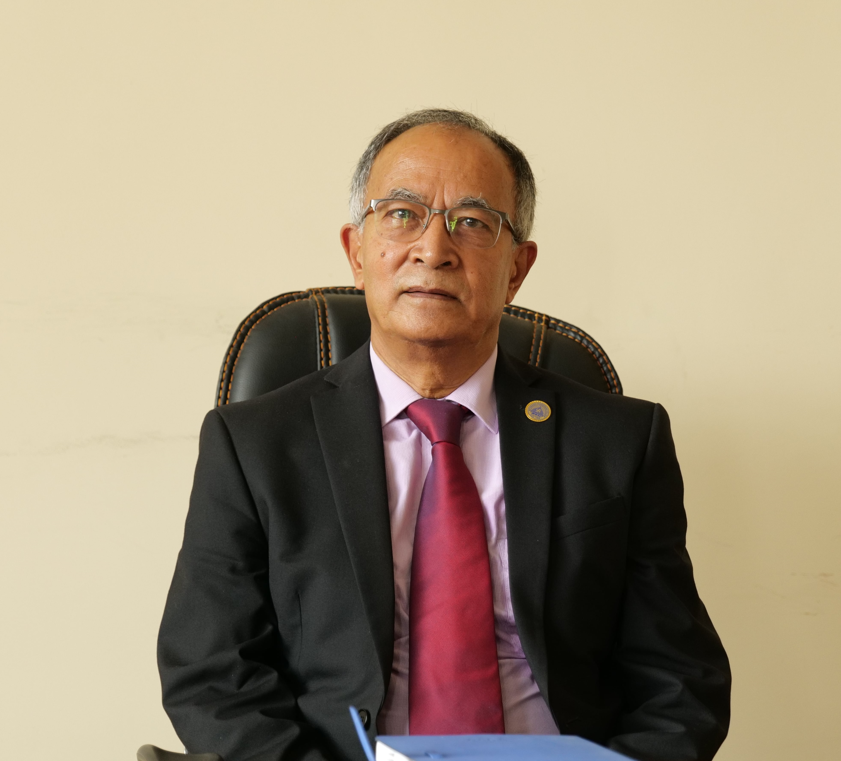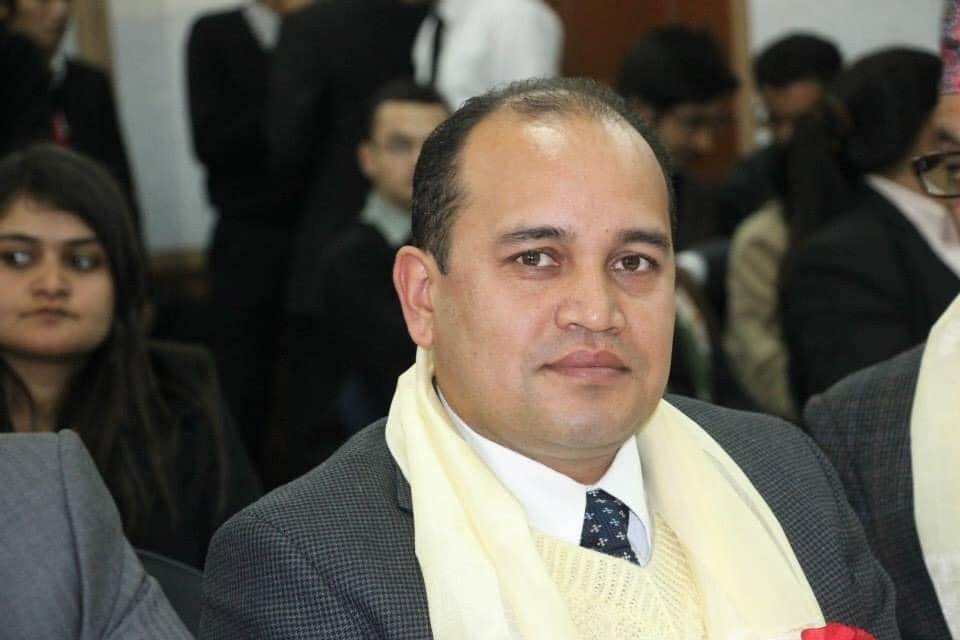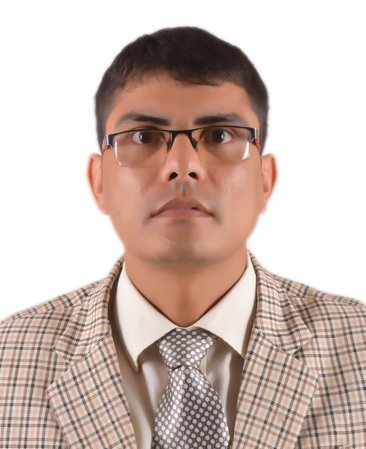Navigating Trajectories for the Revitalization and Progression of Engineering Pedagogy

Prof. Er. Hirendra Man Pradhan, a veteran in engineering field with an extensive educational background, currently serves as the president of AECoN, alongside his leadership role at his college. Reflecting on his early years, he experienced a distinctive educational journey due to certain health considerations. From grades 1 to 5, he did not attend school, following medical advice that led him to postpone formal education un til the age of 15.
Prof. Er. Hirendra Man Pradhan, a veteran in engineering field with an extensive educational background, currently serves as the president of AECoN, alongside his leadership role at his college. Reflecting on his early years, he experienced a distinctive educational journey due to certain health considerations. From grades 1 to 5, he did not attend school, following medical advice that led him to postpone formal education un til the age of 15.
Subsequently, his formal schooling commenced in Grade 6, marking the beginning of an educational trajectory that saw him successfully completing the School Leaving Certificate (SLC) examination from Durbar High School in 2025 BS at the age of 15, achieving outstanding results. His educational journey continued with the pursuit of the Intermediate of Sciences (ISc) program at Amrit Science Campus in 2028 BS.
Later, he earned a Bachelor's degree in Civil Engineering from the esteemed Indian Institute of Technology, Madras. Post-graduation, he returned to Nepal, commencing a career in education as a lecturer at Pulchowk Campus. Furthering his academic pursuits, he pursued a Master's degree in the United States at Oklahoma State University before resuming his position at Pulchowk Campus upon returning to Nepal.
Over the course of his career, Prof. Er. Pradhan has taken on various leadership roles, including serving as the Campus Chief at Paschimanchal Engineering Campus, Pokhara. He later assumed the position of Deputy Coordination of the Higher Education Project and served as the Planning Chief at Tribhuvan University. Additionally, he had the privilege of being a member of the Planning Commission.
Presently, he holds the position of Principal/Chairman at Kathmandu Engineering College, a distinguished institution in Nepal. Moreover, he serves as the President of AECoN, an umbrella organization overseeing all private engineering colleges in Nepal. Prof. Er. Pradhan's journey, both in education and professionally, is characterized by diversity, significant achievements, and notable leadership roles.
What motivated you to contribute to the nation's development through your dedication to engineering education?
In 2048 BS, during my tenure as the Chief of Paschimanchal Campus, Pokahra, Bachelors of engineering courses were only available at Pulchowk Campus. At that time, 2500 students had the opportunity to apply for mere 48 seats in Civil Engineering at Pulchowk Campus, leaving many unable to pursue engineering. Consequently, a significant number of students chose to study abroad due to this limited availability. This situation led me to consider the possibility of offering engineering courses on private campuses as well. However, convincing authorities and obtaining affiliation for this endeavor was a lengthy process, taking approximately four years. I resigned the position of Campus Chief and established Kathmandu Engineering Campus. I currently hold the position of President at Nepal Finance Company and am also the executive member of the Conference of Financial Banks and Financial Institutions.
In the past, there was a prevailing belief that if you achieved a first division in the School Leaving Certificate (SLC) examination, you were expected to pursue the Intermediate of Science (ISc) program and eventually become a doctor or an engineer. This mindset used to be quite common. Back then, due to a limited number of engineers, individuals in these professions were highly esteemed and respected in society. However, societal perspectives have evolved over time. While engineering still retains its value, it has experienced a decline in reputation in recent years. Nevertheless, it's important to note that there is still a substantial number of students who aspire to pursue engineering. According to the latest statistics, out of a population of 30 million people, 75,000 are currently enrolled in engineering programs.
Could you kindly share information about the diverse engineering offerings available at Kathmandu Engineering College (KEC)?
Initially, there were no civil engineering programs available. Subsequently, we introduced various programs such as computer science, electronics, and more at Kathmandu Engineering College. The college offered a total of five different programs. Over time, the college has successfully produced over 5000 engineers, and they are highly sought after in the job market, performing exceptionally well. Assessing quality can be somewhat subjective, but in my opinion, the engineering colleges we have established maintain a high standard.
However, some individuals are spreading negative perceptions about the quality of engineering colleges. It's worth noting that when we look at examination results administered by the council, the findings reveal interesting insights. Regular students from Tribhuvan University had a pass rate of 50 percent, while Pokhara and Purbanchal universities had pass rates of 30 percent. In contrast, students who studied abroad had pass rates of only 10-15 percent. These statistics indicate that Nepal offers quality education, especially considering that the curriculum at Tribhuvan University is developed in collaboration with Canadian universities and has been standardized after modifications. The council consistently assesses the equipment and infrastructure in colleges. If we lack the necessary equipment, the council has the authority to revoke our accreditation. However, we have access to suitable equipment, and students engage in practical exercises as well. While it may be challenging to find the exact equipment in the market, we make sure to identify the best available alternatives. Engineering education serves as a means to broaden one's perspective and problem-solving abilities.
What aspects, when enhanced, could propel Nepal's engineering education to unparalleled global excellence?
It's important to update the curriculum every two to three years and incorporate current trends and teaching methods. We provide instruction on the latest software and technologies. Unfortunately, some students opt to study abroad by spending more money instead of taking advantage of the resources we offer here. This is partly due to the prevailing negative perception about Nepal in our society. The questions consistently align with the students' curriculum and are based on the content within their syllabus. These questions are not beyond the scope of their studies and are typically rooted in the material covered during their plus two educations. While some students may find certain questions straightforward, others may perceive them as more challenging. We use a grading system to avoid failing students, and there's no concept of passing or failing, only different grades based on performance. In the last examination cycle, around 180,000 students successfully completed their plus two education. However, a significant portion, approximately 130,000 students, opted to study abroad, possibly to support themselves financially. If this trend continues, Nepal could face a shortage of educated individuals in the near future.
From what I understand, even in the United States, where students may receive a 50 percent scholarship, they still need to cover a minimum of $15,000 annually. For a bachelor's degree, the cost can be as high as $60,000 for four years, equivalent to 6 million Nepali rupees. Therefore, it's crucial to focus on improving the quality of education within Nepal. Flaws in the education system can negatively impact the entire nation. To provide quality education, effective monitoring and oversight are essential.
In what ways do in-land engineering colleges contend with the challenges posed by students opting to pursue their education abroad?
We can make an estimate that out of the 100 percent of students who passed, which is around 40,000 students, approximately 90 percent of them, totaling about 30,000 students, chose to study abroad. Many engineering colleges in Nepal are struggling to fill at least 50 percent of their available seats. However, the engineering programs offered by Pokhara University are performing well.
We have plans to expand our reach to all seven provinces and provide valuable education in the field of engineering and energy. In the present generation, there's a prevailing notion that parents take pride in saying their child is studying abroad, and this trend may not be beneficial for our country. Nevertheless, there's a valid question about what opportunities are available for students who stay in Nepal. Currently, the government provides jobs to only about 50,000 students out of the 650,000 graduates. It's a common perception that government jobs hold higher priority, but there are numerous self-employment opportunities in Nepal that often go unnoticed.
The prevalence of smartphones has had a negative impact on children's lives, as they seek convenience and quick results without putting in much effort. Of course, as parents, we all want the best future for our children. When I asked my students' parents what kind of gifts they give to their children, most mentioned chocolates and toys, while very few mentioned giving books. Sometimes, we unintentionally contribute to our children's decline without realizing it.
What strategies could be employed to rejuvenate engineering institutions?
Until the broader society undergoes improvement, advancements in education will likely remain stagnant. Politicians must take into account the decline in the nation and make efforts to uplift it. Every citizen of Nepal should actively contribute to elevating our country and consider engaging in endeavors within our own nation. In reality, Nepal possesses abundant resources, but our mentality often falls short. It is essential that we direct our attention towards identifying and addressing issues and subsequently work on finding solutions We also possess significant wealth in the form of medicinal herbs, which presents an opportunity for us to invest in their development and generate revenue.
While students abroad often engage in various jobs like cleaning and maintenance, it's less common to see Nepalese students doing the same type of work in Nepal. Additionally, Nepal's educational institutions have attempted to adopt international educational models, but they have faced challenges in replicating them effectively.
Are the engineering colleges attracting students with the expected level of quality and aptitude?
The responsibility of students is to acquire knowledge, while teachers are tasked with imparting it. There are two distinct categories of students: those who aspire to become engineers and diligently pursue their studies, and those who lack the desire to learn. Consequently, engineering education poses challenges for both educators and students alike. Additionally, it is crucial to have a systematic and scientific approach to examinations. Our primary objective should be to enhance the pass rates by delivering high-quality education to students.
How far into the horizon have you envisioned the prospective trajectory of engineering education in Nepal?
Every field offers career opportunities if you concentrate on them. In this current generation, areas such as databases, artificial intelligence (AI), robotics, and drones are rapidly advancing and should receive increasing attention and investment from our nation. These fields hold significant importance among all others. By fostering the development of these sectors, our nation will inherently progress and prosper. In my perspective, it's highly likely that in the near future, a majority of countries will transition to flying vehicles as the primary mode of transportation instead of traditional ground-based vehicles. Embracing new technologies and adapting to them is crucial.
What are the compelling reasons for students to opt for Kathmandu Engineering College?
First and foremost, trust is a fundamental aspect for us. We have a complete range of faculties dedicated to the courses we offer. In addition to regular assessments, we incorporate alternative tests as well as yoga and meditation, which indirectly contribute to the development of mental focus and cognitive abilities. Our academic outcomes have been consistently impressive. We also provide training in the "Art of Living." However, despite our accomplishments, we find ourselves unsatisfied because only 60 percent of our students graduate as engineers within four years. Our objective is to ensure that every single student achieves this milestone. We refrain from assigning blame and instead adopt a positive outlook, committed to continuous improvement.
What messages would you like to share with students aspiring to pursue a career in engineering?
Since you are here to pursue an engineering education, your primary focus should be on your studies, avoiding distractions. It's essential not to engage in plagiarism and instead put in the effort and dedication needed to excel academically. Continuously challenge yourself by asking why you want to become an engineer and how you can achieve that goal. Utilize the knowledge and guidance available from your peers and teachers rather than resorting to copying or cheating.





